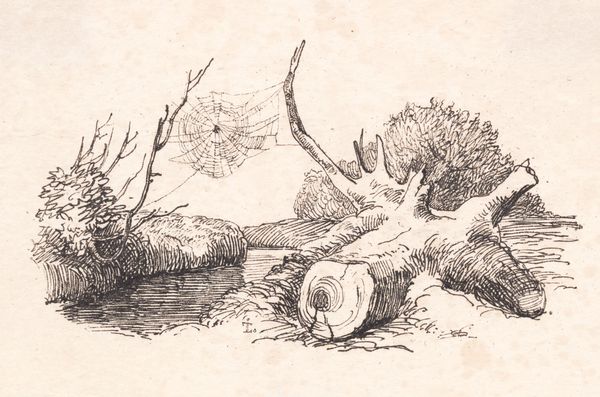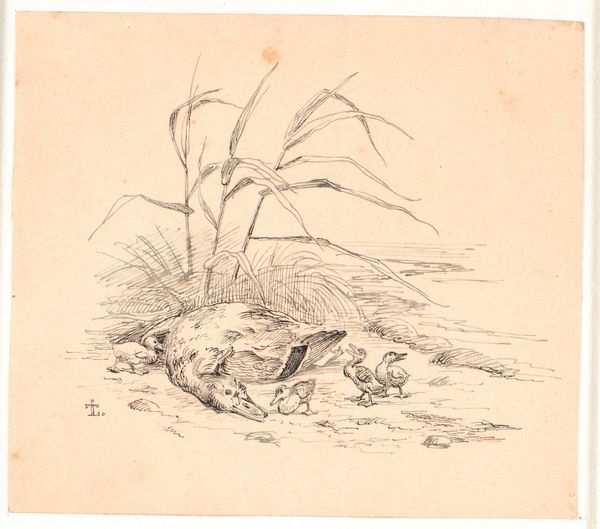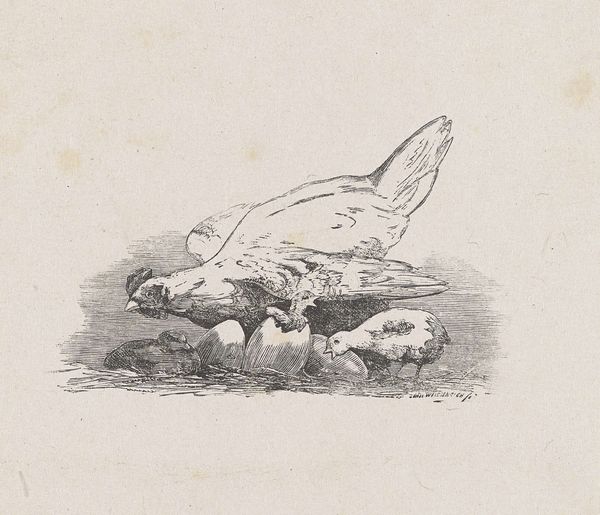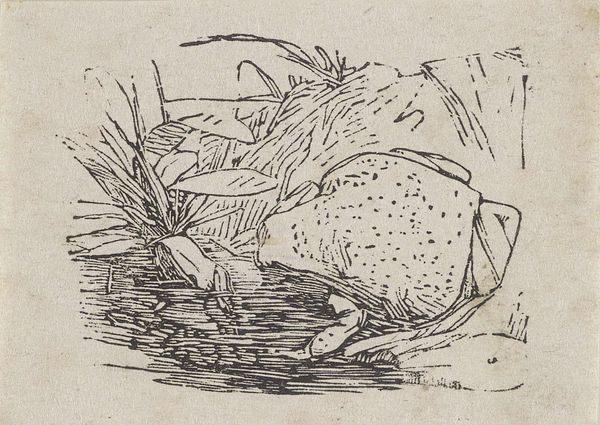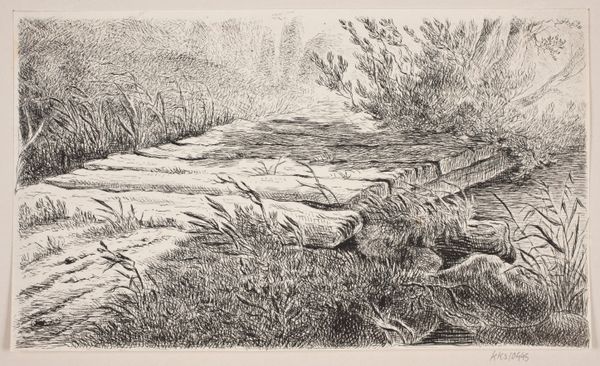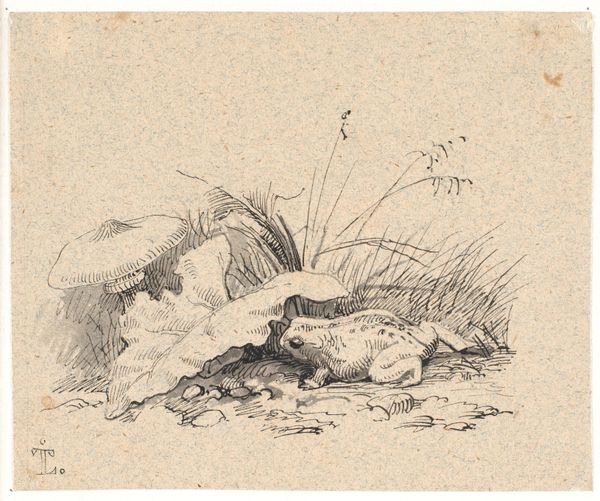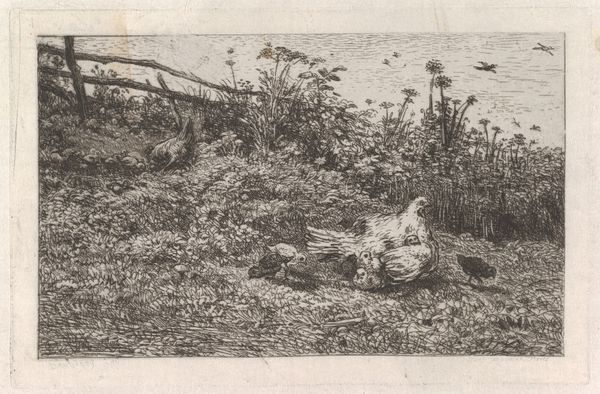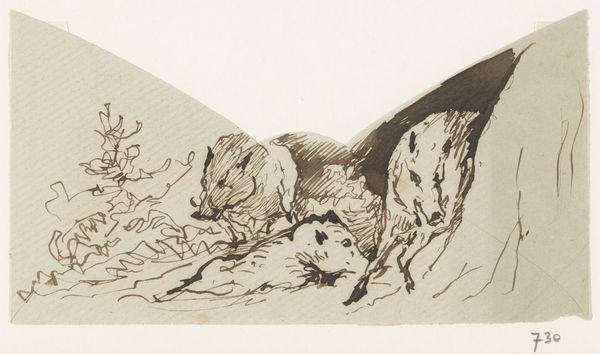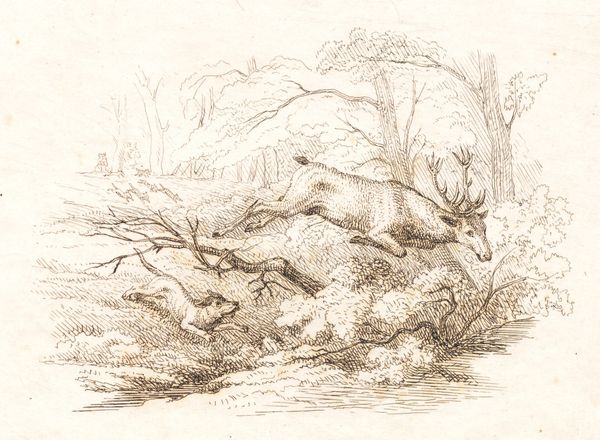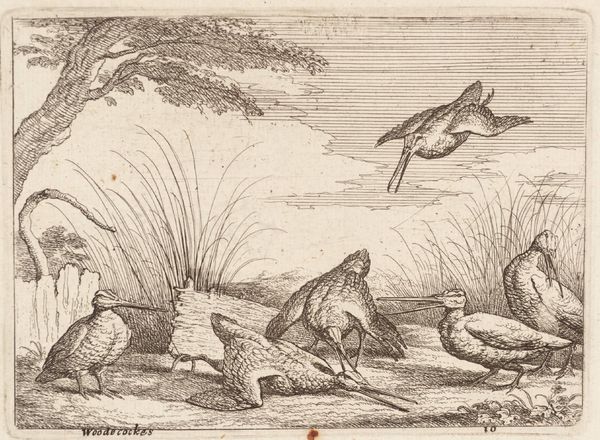
drawing, print, ink
#
drawing
# print
#
landscape
#
ink
#
realism
Dimensions: 105 mm (height) x 128 mm (width) (bladmaal)
Curator: Welcome. Before us, we have Johan Thomas Lundbye's "Lækatten" created in 1843. It's an intimate scene rendered in ink, both drawing and print, currently held at the SMK, the National Gallery of Denmark. Editor: The first impression is a sense of stillness. The muted palette contributes to a peaceful scene with delicate textural details. It feels like a hidden observation, quiet and concentrated. Curator: Indeed. Lundbye captures a precise moment with minimalist means. Consider the way he renders form with the subtlest of gradations, manipulating ink density to conjure volumes, a compositional mastery creating spatial depth with the foreground's detailed shrubbery and the soft recession towards the horizon line. Editor: Let's not overlook that this is also a printed image, with considerations for the craft. In its making, the material basis shifts; it is the transfer of marks by hand through mechanical means which raises interesting questions. Does the material condition influence our perception of it? And to what extent do considerations of the natural elements as resources impact our reading of it? Curator: Precisely! Lundbye uses the repeatable matrix of printmaking as a medium, yet the scene still echoes a distinct artistic voice, and not one of mechanical detachment, but of empathy. This connects to contemporary debates concerning artistic authenticity and commodification of reproducible images during the burgeoning of Romantic landscape. Editor: Romanticism, as an intellectual response to mechanization! Consider the print, thus not only as a singular image, but a process born of specific conditions where natural observation and industrial agency merge in peculiar circumstances. Curator: Precisely. The balance Lundbye strikes between objective rendering and affective tone reveals a profound understanding of how visual language functions, engaging viewers through calculated arrangement and subdued coloration. Editor: Yes, beyond the captivating interplay of process and form lies an artistic project entangled with material realities—how raw materials such as inks and stone enable creative expression across socioeconomic factors—making such images more accessible across culture through material availability and economies of production. Curator: I've found that approaching his practice formally gives way to understanding a wider engagement with Romanticism's values that include the sublime grandeur of landscapes down to intimate connection to humble nature. Editor: And I would say the context surrounding printmaking shows a lot regarding a landscape image's accessibility during his time!
Comments
No comments
Be the first to comment and join the conversation on the ultimate creative platform.
